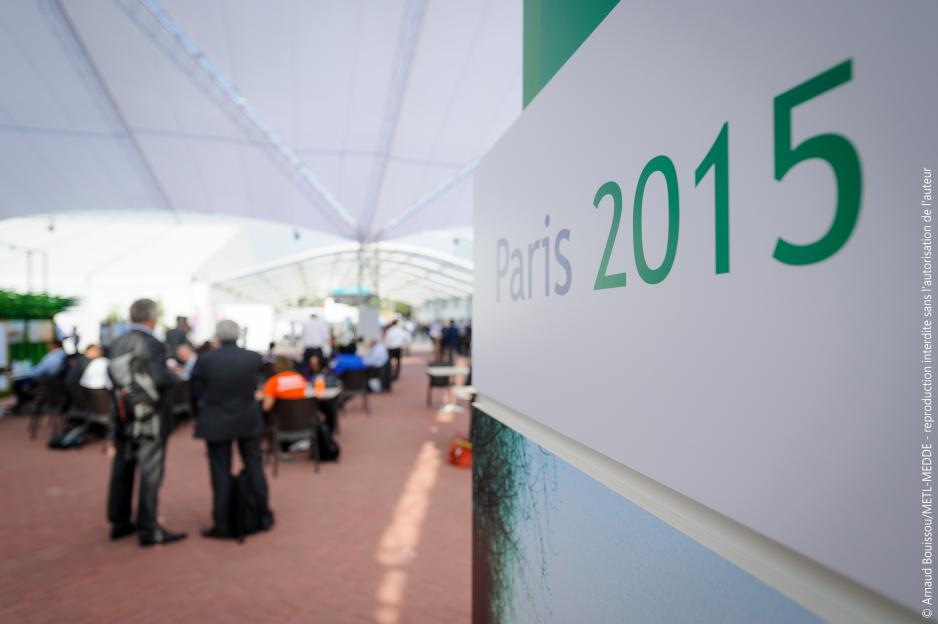COP 21 and the Arctic: Rhetoric versus Reality

On Monday, 40.000 state leaders, advocates, and experts convened in Paris to seek a binding solution to climate change at the 21st UN Climate Summit, COP 21. They will, through negotiation, compromise, and strong resolve, shape the very contours of what Earth’s future will be for the next generation.
This two-week meeting is seen by many to be the world’s last chance to limit global temperature rise to the elusive two-degree target. Two degrees Celsius, or 3.6 degrees Fahrenheit, is oft-cited as the threshold to how much humanity can warm Earth’s atmosphere before day-to-day life is disrupted by climate catastrophes like severe drought, extreme storm surges, and wider-ranging wildfires.
The Symbolism of Melting Ice
The circumpolar north is warming twice as fast as global average temperatures due to polar amplification. From its inception, the Intergovernmental Panel on Climate Change (IPCC) has continuously noted in its reports and meetings that climate changes occurs faster and with more severity in the Arctic regions, resulting in some of the most extreme impacts on the planet. Two degrees would translate to at least a three to six degree Celsius increase in the Arctic by 2100.
It does not reflect the local realities of positive feedback loops that ultimately translate to a near future of no sea ice; the relocation of dozens of rural communities; serious food insecurity for subsistence hunters, gatherers, and herders; and new concerns about public health and warm weather disease. This has led to Okalik Eegeesiak, the Arctic indigenous delegate for the Inuit Circumpolar Council and the Saami from Norway, Sweden, Finland, and Russia, to call for a 1.5 degree limit to temperature rise in Paris this week.
In President Obama’s remarks at the first session of COP 21, he spoke of climate change in the Arctic through his firsthand experience in Alaska, “where the sea is already swallowing villages and eroding shorelines; where permafrost thaws and the tundra burns; where glaciers are melting at a pace unprecedented in modern times.” Since August, Obama has used his northward journey to America’s 49th state as motivation for climate action to world leaders, politicians, and the public. Through rhetoric and visuals, he has — like many before him — constructed the Arctic as the world’s canary in the coalmine of global warming. From images of melting ice to impassioned speeches by indigenous activists, the top of the world has been profoundly inscribed into the symbolic story of climate change. And for sound scientific reasoning.
And yet, despite the continued acknowledgement of the Arctic as the frontline of climate change, there is a disconnect between political narrative and financial commitment to Arctic adaptation efforts.
A Failure to Commit
As the first week of the negotiations close, there has to date been no pledges to assist with Arctic adaptation by any country delegation. This stands in stark contrast to financial commitments to other at-risk peoples in the Pacific Islands, Africa, and Central America. On Monday, President Obama announced that the United States will contribute $51.2 million to that Fund, bringing total contributions from 11 donors to $248 million. The Least Developed Countries Fund uses government funds pledged by developed government and private donations to finance the preparation and implementation of climate adaptation in developing countries.
Arctic settlements have many similarities to some of the Least Developed Country communities in both their ecological risk and socio-economic vulnerability.
However, they are not eligible to receive funding to reduce vulnerabilities that seriously affect their health, livelihoods, and cultures from these international funds because of their location within the developed countries of United States, Canada, Denmark, Norway, Sweden, Finland, and Russia. Many of these countries have national adaptation plans, or have pledged funding to Arctic communities. President Obama announced the United States’ own pledge of support this past September. But these measures are not enough to realistically meet the costs of climate change in the Arctic.
As an example of these shortcomings, the Denali Commission, an independent US federal agency designed to provide utility, infrastructure, and economic support throughout Alaska, committed $2 million to support voluntary relocation efforts and other resilience strategies for vulnerable rural Alaska communities. But relocating a single community can cost $100 to $200 million, and out of 213 Alaska Native villages, 186 are affected by flooding and shoreline erosion.
The Need for Regional Action
On Tuesday, Okalik Eegeesiak, Chair of the Inuit Circumpolar Council and representative of the Arctic indigenous delegation at COP 21, addressed world leaders, civil society, and concerned citizens at the opening of the International Indigenous Peoples Pavilion.
In her opening remarks, she spoke of the shared Arctic Indigenous experience of living in a rapidly changing North:
“The health and well-being of Inuit and Saami are inextricably tied to the Arctic environment and in particular the tundra, the marine environment and the snow and ice. Inuit and Saami are deeply concerned about the actual and potential impacts of climate change on their cultural, social and economic health and corresponding human rights.”
Over the last week of the negotiations, world leaders have the chance to ensure that the health and well-being of the Inuit and Saami are secured again the most immediate impacts of climate change through moving beyond Arctic rhetoric and symbolism and towards concrete commitments for adaptation financing and capacity building in the North.
